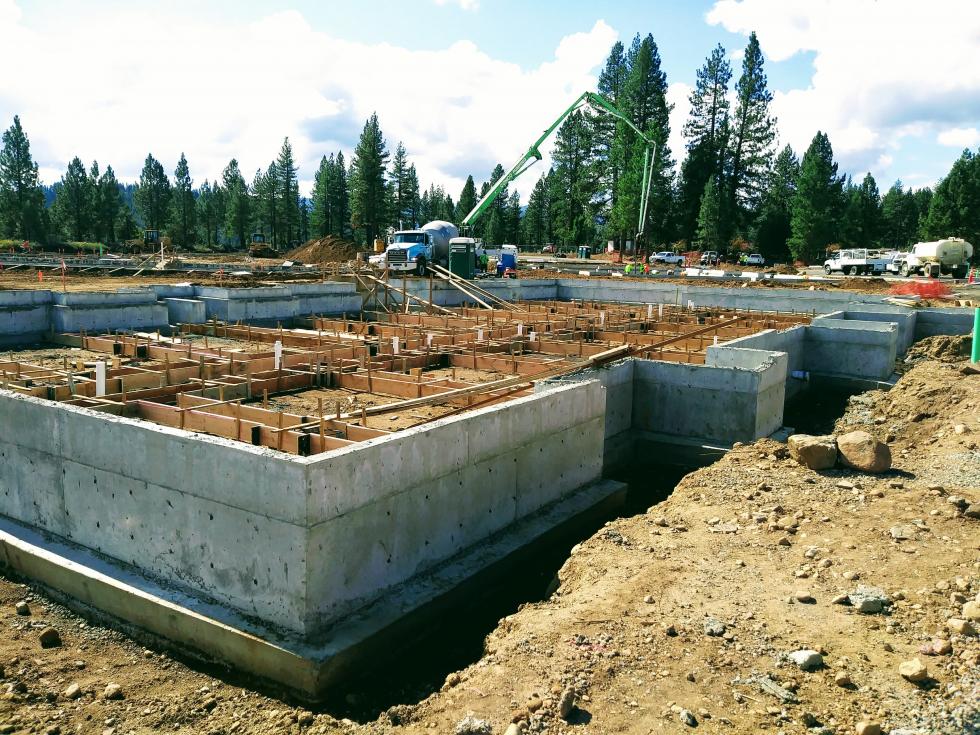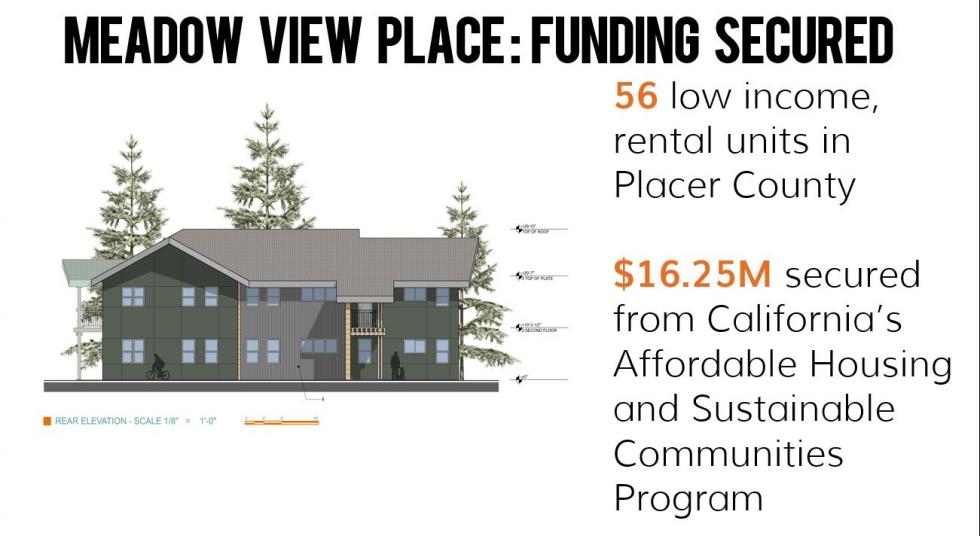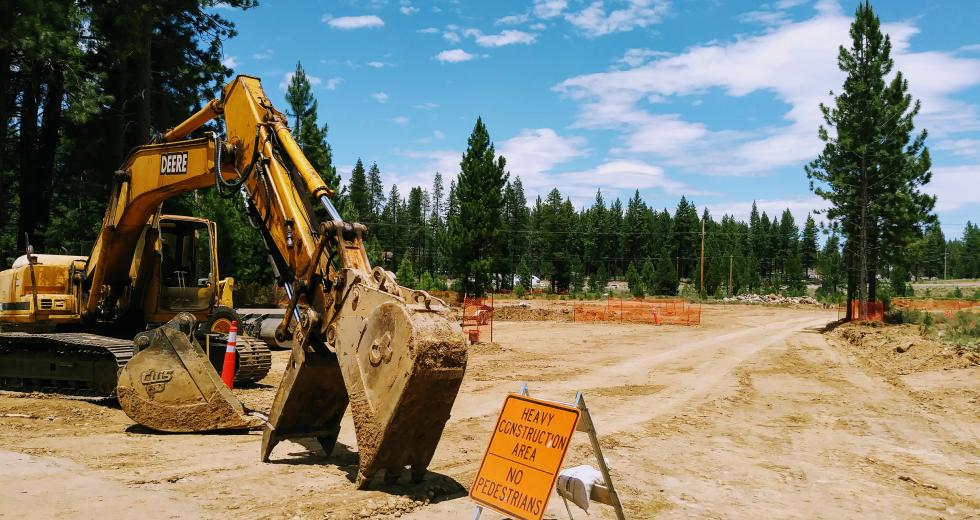Karen Hernandez works with a number of families who struggle to afford a home. It’s part of her role as volunteer director for ReDirect Nuevo Camino, a Lincoln nonprofit that serves at-risk youth in Placer County. Many combine, forming households of seven or eight people sharing a modest two-bedroom apartment designed for four.
“There is a lack of affordable housing and larger rentals available for these families in Placer County,” she says. “And it’s not just a few families, but more than I can count.”
Affordable Housing Projects in the Works
South Placer County projects currently in the pipeline include a new 80-unit workforce housing complex in Roseville’s historic Old Town from developer St. Anton Communities. Additionally, the old Roseville Hotel, which was under code enforcement and a blight in the community, was razed to make room for a 65-unit project from affordable housing developer, Meta Housing. Both projects are scheduled to begin construction later this year. In Auburn, the DeWitt Center site is being considered for mixed-use development, including market rate and affordable housing units.
Hernandez has faced this struggle on a personal level, as well. As the only wage earner in a three-person household — she works as a claims representative for an insurance company in Rocklin — she spends more than half her income on rent. “I qualify to buy a home in the $220,000 – $250,000 range, but it’s impossible to find a house at that price level here,” she says.
Like many California municipalities, Placer County is grappling with an affordable housing crisis. An estimated 40 percent of all Placer County households with a mortgage and 55 percent of those renting pay more than 30 percent (the affordability threshold) of their income for housing, according to a 2017 assessment. While the shortage of affordable housing is a widespread problem, much of the need exists in the eastern part of the county, where a tourist-based economy has put the squeeze on housing for the local workforce.
Related: Housing crunch in Truckee and north Tahoe leaves workers with a long commute home.
Related: Tahoe50 giving club amplifies the impact of the Tahoe Truckee Community Foundation
Placer Housing Matters, a project of Auburn-based Placer Community Foundation, is spearheading an effort to advocate for more permanent, affordable housing solutions, in partnership with government entities and other nonprofit organizations like the Tahoe Truckee Community Foundation.
“All the organizations that we make grants to have an underlying challenge related to housing for the people they are trying to serve, like seniors, domestic violence victims, foster kids, the homeless and others,” says foundation CEO Veronica Blake. The Placer County Economic Development Office, where Blake is a board member, commissioned a study that also identified a lack of workforce housing for area employees. “Our schoolteachers, our firefighters, nonprofit workers and those who work in the service industry can’t afford to live here,” she says.
Coburn Crossing in Truckee will include 132-deed-restricted,
market-rate apartments and six low-income apartments. (Photo
courtesy Tahoe Truckee Community Foundation)

After three years, the collaborative efforts in Placer County are beginning to pay off, with new grant money being secured and several housing projects now underway across the county.
New Housing Unit Forms
Placer County’s regional housing need is estimated to be just over 5,000 units — of those, about 3,200 are in the affordable category, according to the most recent Housing Element, which is a state-mandated component of the County’s general plan updated every eight years.
Affordable rental housing is typically targeted toward lower-income households (those earning less than 80 percent of the area’s median household income of just over $76,000), while affordable owner-occupied housing is targeted toward low- and moderate-income households (those earning less than 120 percent of the area’s median income). The median price of homes sold in Placer County as of this August was $475,000, and the median rent price was $2,195 per month, according to Zillow.
Placer County has created a new housing unit to focus on the countywide housing effort and includes staff from several county offices. Last year, for the first time, the County also created an annual housing work plan that prioritizes its deliverables. “As we went through the exercise of creating a housing needs assessment, it was crystal clear that while the needs are different countywide, we needed to take a look at how we are implanting our Housing Element. It pushed us in the direction of creating this work plan,” says Jennifer Merchant, who manages housing for Placer County.
Developers secured $16.25 million in grant money to build 56
low-income rental units in Placer County. (Courtesy Tahoe Truckee
Community Foundation)

Since the initial plan was approved in August 2017, the County has completed many of the tasks, including developing key economic reports needed to better understand housing needs, mapping and inventorying publicly-held land that could be used for housing projects, and creating new tools to better monitor developers’ progress in completing their affordable housing obligations.
The County also helped purchase and secure supportive housing for the homeless and those at risk of homelessness, and proposed new ordinances for tiny homes and cooperative housing, both aimed at increasing the total number of homes and the mix of housing types available to local residents. The Board of Supervisors recently approved the County’s updated annual housing work plan for fiscal year 2018-2019.
Responding to Different Housing Challenges
Stacy Caldwell, CEO for the Tahoe Truckee Community Foundation, has a particular set of challenges with her area’s tourist-based economy. The workforce in eastern Placer County is dependent on seasonal workers, but many can’t afford to live locally and must make the twice-daily commute from less-expensive communities like Reno. In addition, a disproportionate number of homes in the Tahoe and Truckee region are second homes that remain empty much of the year or serve as vacation rentals.
“Over 65 percent of our homes sit vacant more than 50 percent of the time,” Caldwell says. “Half of our residents are commuting outside our region for jobs so they can afford to live here, while the other half are coming up from Reno so they can afford a house.” Currently, 76 percent of the local residents are spending more than 30 percent of their income on housing.
After a lengthy and deep dive into the region’s housing needs, Caldwell’s foundation launched the Mountain Housing Council of Tahoe Truckee in April 2017, a three-year initiative focused on advancing solutions for housing. Twenty-eight partner organizations signed on, with many agreeing to a three-year financial commitment and all providing access to top leadership.
The DeWitt Center in Auburn is being considered for a mixed-use
development, which will include housing. (Rendering courtesy
Placer County)

Early on, when both Caldwell and Blake started to work on housing, they connected on the phone. “We realized that even though we share a county — one on the western side, one on the eastern side — the dynamics are dramatically different and our approaches, by necessity, must be different,” says Caldwell. “We have both designed the best approach and program to coordinate our communities to mobilize around solutions. We are in constant conversation around our strategies, seek opportunities to advocate at the state level and both of our organizations participate in the Housing Committee of the League of California Community Foundations.”
Currently, the Mountain Housing Council is tracking 342 affordable local housing units across the region, which it reports on quarterly at MHC meetings and serves as a collaborator and soft financing partner to bring key people together. Truckee Artist Lofts will add 76 units of affordable housing and the Coburn Crossing development is slated to add 138 rental units. Ten rental units (eight low income, two market rate), will be built from renovating an existing building in the Tahoe City Marina. Placer County is also working to secure funds for an 11-acre piece of property in Tahoe City that would be developed for workforce housing.
The MHC has also been able to attract about $40 million worth of capital for its local developers through advocacy with the U.S. Department of Housing and Urban Development and other housing agencies that provide grants. Caldwell hopped on a call to help one developer secure $15 million in HUD grant money, while another was able to capture $16.25 million from California’s Affordable Housing and Sustainable Communities Program to build 56 low-income rental units.
Additionally, both Caldwell and Blake are exploring different models with their respective foundations where they might be able to use philanthropy to help with the affordable housing challenge. The pair met with Mark Stivers, executive director of the California Tax Credit Allocation Committee in Sacramento, to advocate for changes to the tax credit regulations that support the community foundation’s ability to hold land for affordable housing.
“We don’t want to leave any stone unturned,” Blake says. “And we won’t stop until housing is available for all of our residents.”



